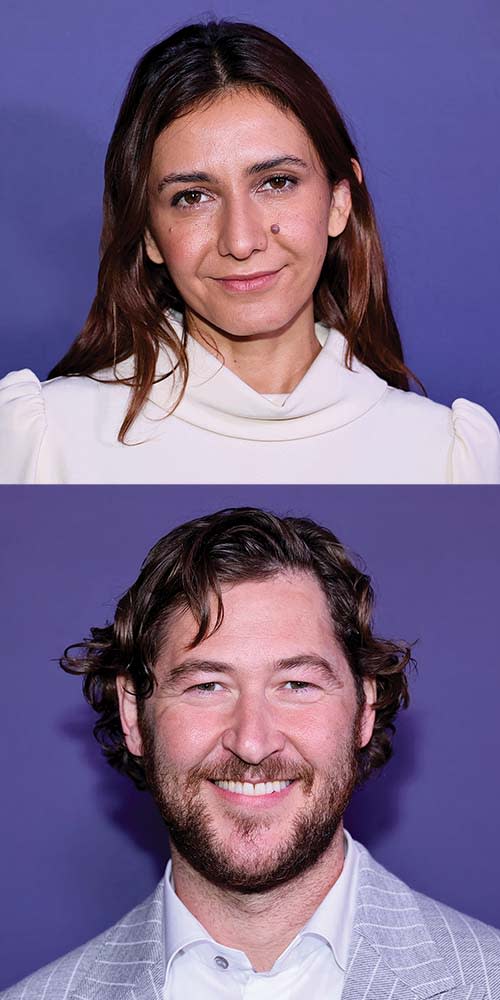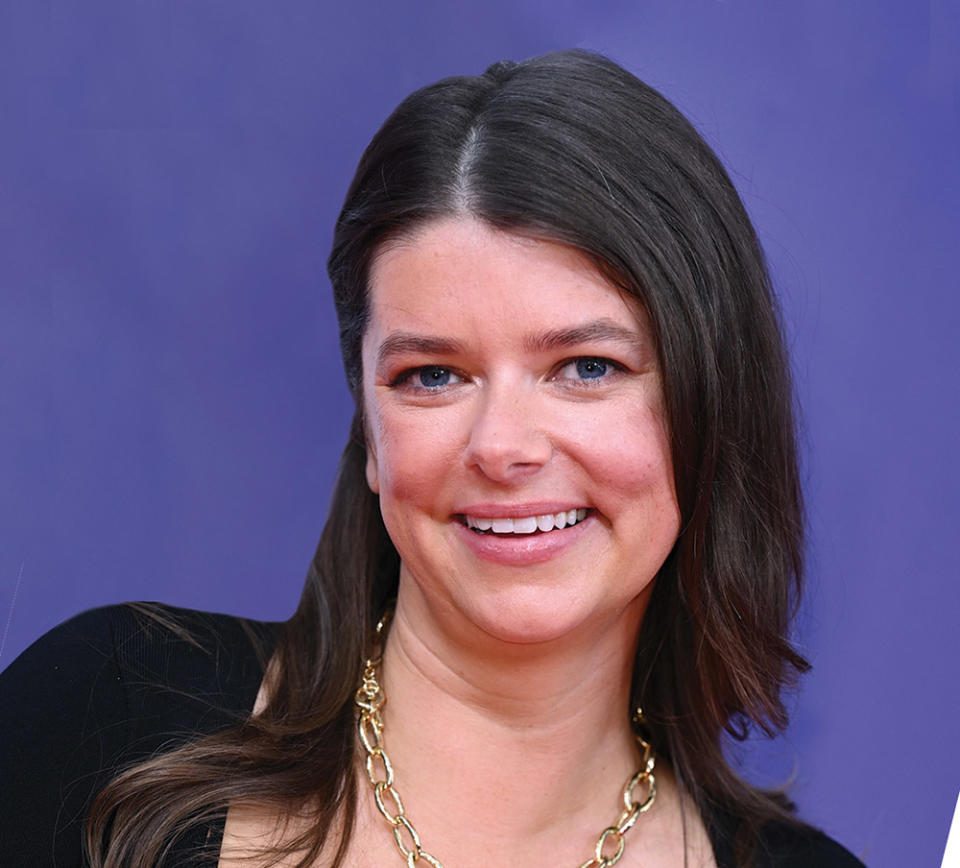How ‘Eileen’ and ‘Nyad’ Screenwriters Brought Two Wild and Turbulent Lives to the Screen
- Oops!Something went wrong.Please try again later.
- Oops!Something went wrong.Please try again later.

Eileen
Screenplay adapted by Ottessa Moshfegh and Luke Goebel
Ottessa Moshfegh’s debut novel, 2015’s Eileen, was an overwhelming literary success; it won the PEN Award for debut fiction and was shortlisted for the Booker Prize. But beyond the accolades, the critical reception often included backhanded — sometimes bordering on misogynistic — disparagements of the protagonist. The book follows 24-year-old Eileen, stuck caring for her alcoholic father in her Massachusetts hometown while working as a secretary at the local juvenile correction facility. In first-person narrative, she fantasizes about moving to New York City and describes her dirty house, body issues and laxative abuse; the latter spurred readers to use terms like “disgusting” to describe the main character.
More from The Hollywood Reporter
'The Killer' Costume Designer on Dressing Michael Fassbender's Assassin Like a German Tourist
Hollywood Flashback: 'Yesterday, Today, Tomorrow' Had a Big Oscar Win in 1965
'Oppenheimer' Composer Ludwig Göransson on Crafting the Music of a Scientist's Mind

Moshfegh says she has complicated feelings about that element of the book’s publication, but when she sat down to write the screenplay for the Neon film alongside her husband, Luke Goebel, she was armed with a particular kind of insight. “It’s easier to judge a character on the page who is revealing the ugliness of her thoughts and self-obsessions and to place yourself in a superior position,” she says. “But people respond differently to a character onscreen, especially one as beautiful as Thomasin McKenzie. There isn’t any way you could look at her and call her disgusting.” Adds Goebel: “We were given such a gift with this casting, and looking back, I think she is the only person who could have played Eileen.”
The couple’s first joint screenwriting project was a rewrite of the Jennifer Lawrence-starring Causeway, and it was during that process that Goebel suggested they try to adapt Eileen. Soon afterward, director William Oldroyd “came knocking,” and the trio decided to work together. “It felt incredibly fated,” says Moshfegh. “Between us, we had the perfect combination of sensibility and humor and suspense and darkness and irony.”
The novel is notorious for its jarring third-act swerve, when Eileen’s budding friendship with her office’s glamorous new psychiatrist, Rebecca (played in the film by Anne Hathaway), turns into something much darker, hurtling toward a swift and shocking final scene. Moshfegh says that set up her readers to expect the turn — “it’s clear [before the twist] that we’re in the muck and mire of certain aspects of being a human” — but the magic of the film lies in its ability to take viewers by surprise. The screenwriting duo finds satisfaction — even a sense of glee — in the way the Eccles Theater audience during the movie’s Sundance premiere was left speechless. “People don’t leave the theater when it’s over, they just sit there,” says Goebel. “I think it’s a good sign that some people are unhappy with the way it leaves them.”
Nyad
Screenplay adapted by Julia Cox
As she turns 60 and grapples with pangs of regret over her unfinished accomplishments, Diana Nyad (Annette Bening) turns to a famous Mary Oliver poem for guidance in Netflix’s biopic of the competitive swimmer. “Tell me, what is it you plan to do with your one wild and precious life,” reads the final verse of “The Summer Day.” Nyad wrote about the poem in her memoir Find a Way, and screenwriter Julia Cox knew immediately that she wanted to work it into the adaptation as an emblem of what was brewing in her protagonist when she decided to attempt her world-record Havana-to-Key West open swim 30 years after her first failed try.

“It’s funny, a lot of people misinterpret that poem — it’s not about seizing your dreams, but more so appreciating the finer details in life, like the dew on the leaf of a flower,” says Cox. “That didn’t make it into the movie, but ultimately Diana’s misinterpretation doesn’t matter because she was going to see the signs regardless.”
Cox first became interested in Nyad’s life story when she read a profile of the swimmer in The New Yorker. “I was still a baby writer at the time, and I thought, ‘Wow, someone will make that movie and that’ll be great,’ ” she says. Years later, when directors Elizabeth Chai Vasarhelyi and Jimmy Chin were putting together the film, she sat down to read the memoir in full. Immediately, she was struck by the character portrait it offered, one of a “ferociously self-confident but also vulnerable” woman with a thirst for pushing herself to the edge of human experience. But she also saw Diana’s relationship with Bonnie Stoll (Jodie Foster), her longtime best friend turned coach, as a central arc. “Writing a sports movie was sort of a Trojan horse,” she explains. “It’s a way to tell a platonic love story about two complicated women with a beautiful friendship.”
Cox had an overwhelming amount of source material at her disposal, including countless profiles and interviews, and she says the beats of the film emerged almost instantly. “Act one has a bit of courtship, where Diana has to convince Bonnie to go on this crazy ride with her,” Cox explains. “Act two is the ups and downs of the failed attempts and how it affected their relationship; and then they had to come back together and finish the swim.” Cox also spent time with the real-life Diana and Bonnie, describing them as polar opposites with exceptional banter that built out the dynamic between Bening and Foster: “You might have questions you want to ask them, but you’ll end up having a wildly more interesting conversation by just following where they go.”
In order to come in under time (and under budget), Cox learned to kill a few of the book’s more colorful darlings. She zeroed in on one single obstacle to write into each of the swim attempts — in real life, Nyad would encounter sharks, jellyfish and storms at any given moment of each swim — and left a few of the funnier moments on the cutting-room floor. “I particularly liked a scene that didn’t end up in the final film, where she’s just housing pasta and yogurt and beef stew and hard-boiled eggs all as part of one meal,” Cox says with a laugh. A wild — and precious — life indeed.
This story first appeared in the Nov. 16 issue of The Hollywood Reporter magazine. Click here to subscribe.
Best of The Hollywood Reporter

